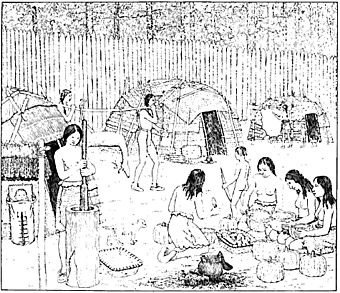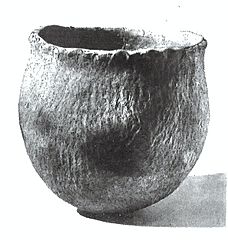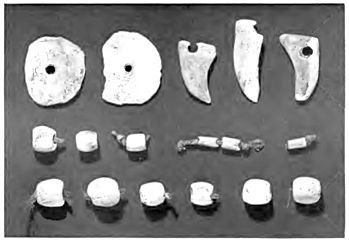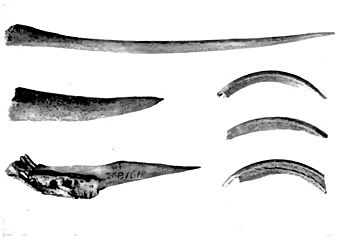Dumaw Creek Site facts for kids
Quick facts for kids |
|
|
Dumaw Creek Site
|
|

Artist's idea of the village
|
|
| Location | Dumaw Crk, NE of Pentwater, Michigan |
|---|---|
| Area | 50 acres (20 ha) |
| NRHP reference No. | 72001477 |
| Added to NRHP | November 15, 1972 |
The Dumaw Creek Site (also known as 20OA5) is an archaeological site in Michigan. It's located near Dumaw Creek, northeast of Pentwater, Michigan. This spot was once a village and a burial ground for people living there in the 1600s. It's one of the most recent "pre-historic" sites found in Michigan, meaning it existed just before Europeans arrived. The site was added to the National Register of Historic Places in 1972.
Contents
A Look Back in Time
Who Lived Here?
The village at Dumaw Creek was likely home to people around the early 1600s (about 1605–1620). These people are thought to be the ancestors of the modern Potawatomi people. They might have left this area soon after Samuel de Champlain visited the region in 1615. This was because fighting tribes began moving into Michigan. If they were the Potawatomi, they eventually moved to the area around Sault Ste. Marie by the 1640s.
What Happened to the Land?
After the village was gone, large white pine trees grew where it once stood. These trees were cut down for lumber between 1870 and 1880. Later, the land was used for farming until about 1930. In the 1940s, oil was found in the area, and oil wells were set up.
How Was the Site Found?
The Dumaw Creek site was first discovered in 1915 by a farmer named Christoph "Carl" Schrumpf. He was removing a tree stump from his field. Schrumpf found 18 skeletons and many old items between 1915 and 1916.
These items were studied by the Museum of Anthropology at the University of Michigan in 1924. However, many archaeologists didn't know much about them. Schrumpf later sold his collection to a private dealer. Eventually, the items ended up at the Field Museum in 1959. By then, no one knew where they originally came from.
George I. Quimby, a researcher at the Field Museum, eventually traced the items back to the Dumaw Creek site. From 1960 to 1962, he collected more items from the surface of the site. He also found other items that had already been dug up from the area.
What Was the Village Like?
The Dumaw Creek site is on a sandy flat area near Dumaw Creek. The creek flows through a small valley about 30 feet (9.1 m) below the plain. The site covers about 50 acres (20 ha). It was used as both a village and a place to bury people.
The village was likely a place where people lived for part of the year. They probably lived in dome-shaped homes called wigwams. The people hunted animals, fished in the waters, and grew crops like corn and pumpkins.
Amazing Discoveries: Artifacts
Many interesting items and features have been found at the Dumaw Creek site. These include burial sites, animal bones, tools made of stone and bone, and red mineral paint. There were also items made of copper and shell, tobacco pipes, animal skins, and pieces of plants and cloth.
Burials and Tools
At least 19 skeletons, and possibly as many as 55, were found in burial sites. The bodies were wrapped in animal furs. They were buried with stone tools and copper beads.
The stone tools found include arrowheads, knives, and scraping tools made from chipped flint. There were also axes made of hard, grainy stone. Most of the stone tools were small, triangle-shaped arrowheads. These are called Madison points. They show that the site belongs to the Late Woodland period.
Copper and Shell Items
Many copper items were also found. Many were large, tube-like copper beads called hair pipes. These were worn as hair decorations. There were also smaller copper beads, cone-shaped decorations, and flat copper pieces. Shell beads and pendants were also discovered.
Pottery and Other Finds
Carved stone pipe bowls were found, along with animal skins and pottery. The pottery vessels were round-bottomed with wide openings and slightly flared rims. The edges of the rims were often wavy or crimped. One pottery vessel with a wavy rim is similar to pottery found at the Moccasin Bluff site in southwestern Michigan. This type of pottery helps archaeologists know the site is from the Late Woodland period, just before Europeans arrived.
A shell pendant with a "weeping eye" design was also found. This special design has been seen at other old sites in the Great Lakes area.













